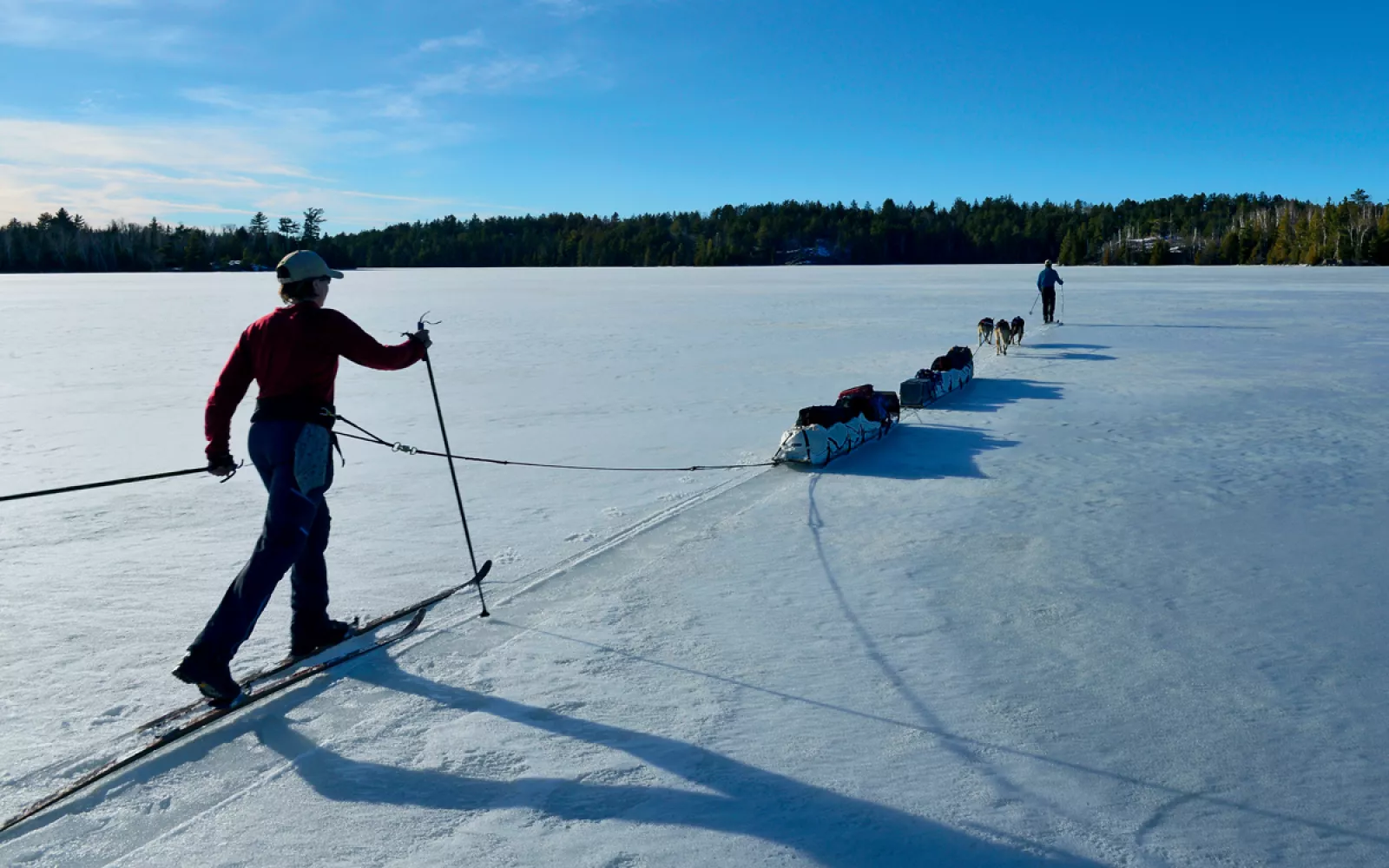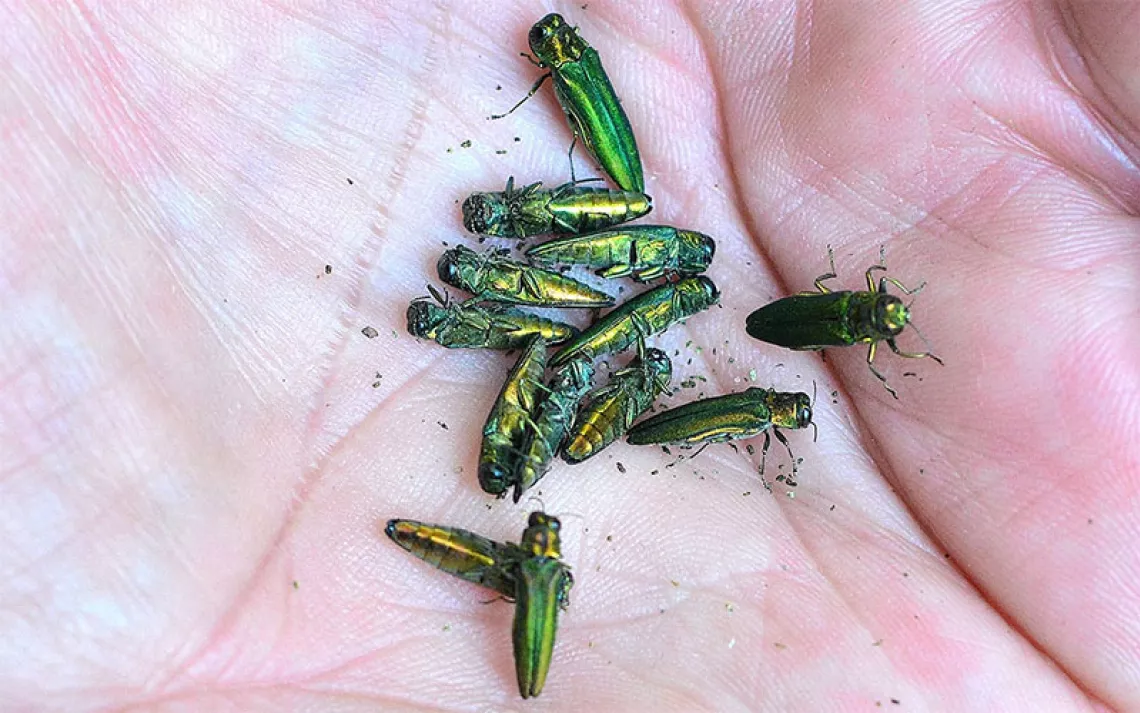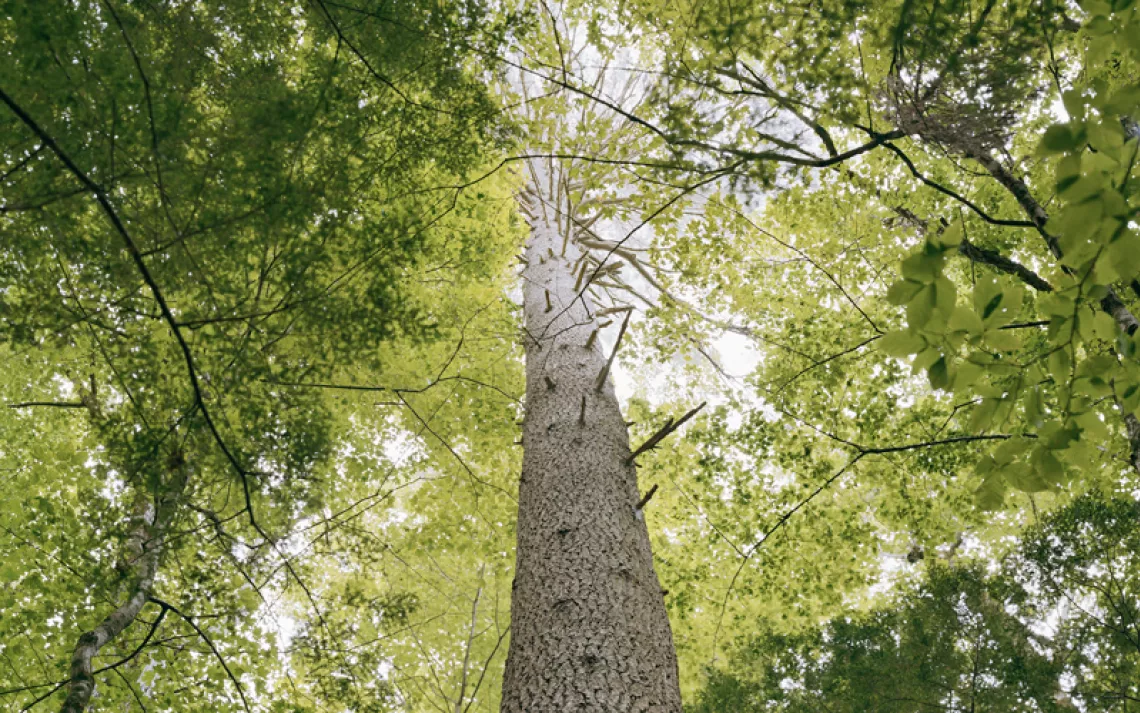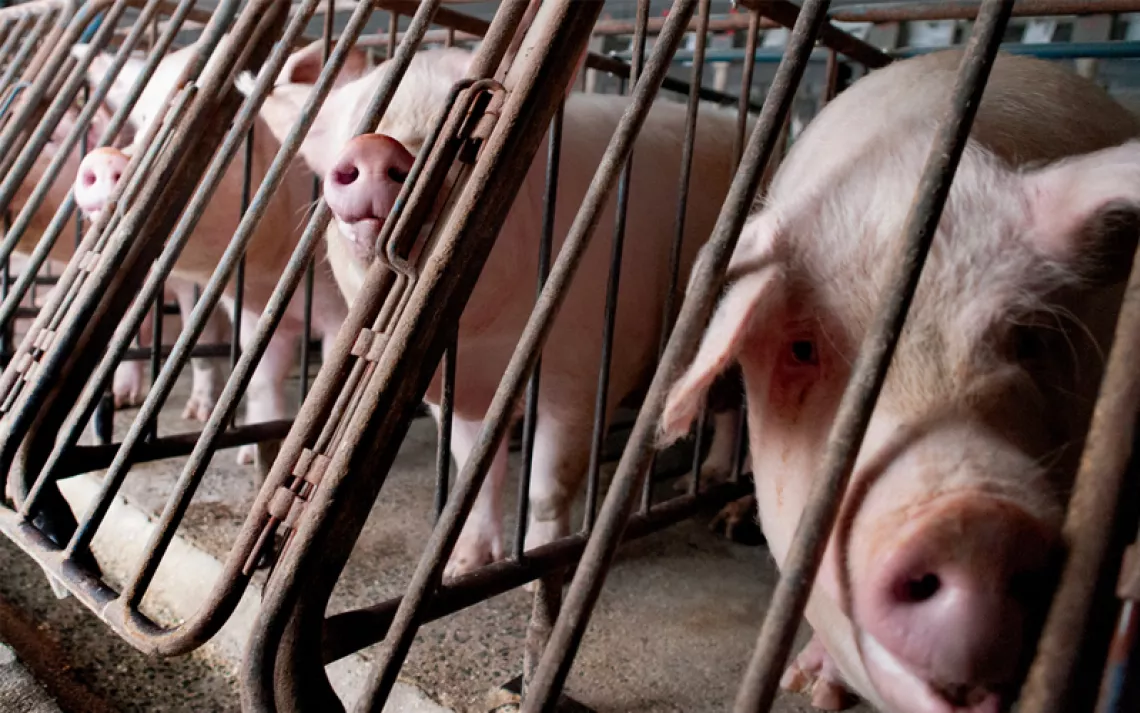Protecting The Boundary Waters Canoe Area
America's most popular federal wilderness is menaced by a giant copper-and-nickel mine
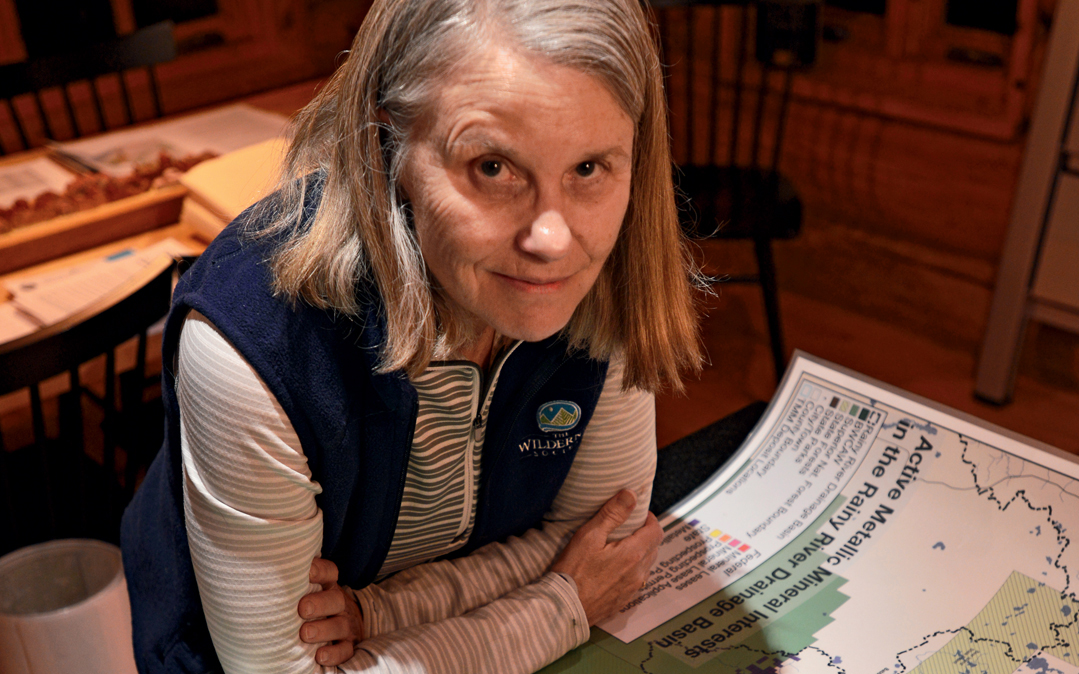
Becky Rom, head of the Save the Boundary Waters campaign, studies a map of mining claims.
On a cold March morning, the frozen surface of Knife Lake mirrors the sky: wispy patches of snow in an endless icy blue. The sled dogs are fresh, barking and lunging into their harnesses. Oblivious to the beautiful day, all they want to do is pull. Tethered to a bruiser named Tank, I dig my skis into the crust to restrain him while my companions, Dave and Amy Freeman, wrangle dogs of their own. The instant I straighten my skis, Tank takes off with graceless exuberance, his tan hindquarters moving like an eggbeater as he claws for purchase on the half-frozen snow. Soon I am chattering behind at breakneck speed. It feels like flying.
We are skijoring—essentially dogsledding on cross-country skis—along an ancient route deep in Minnesota's Boundary Waters Canoe Area (BWCA). For Native Americans—and, later, explorers and fur traders—Knife Lake was part of a watery conduit between the Great Lakes and the heart of the continent, long before an international border bisected it. Today, with over a quarter million visitors per year, Boundary Waters is America's most popular federal wilderness; it is also, at 1.1 million acres, one of the Lower 48's largest. The Freemans first came here as kids with their families on summer vacation—Amy from St. Paul, Dave from Chicago. Later, they met and fell in love while guiding paddling and dogsled trips to the region's myriad lakes. Now, they are fulfilling a dream to spend a full 365 days in the wilderness.
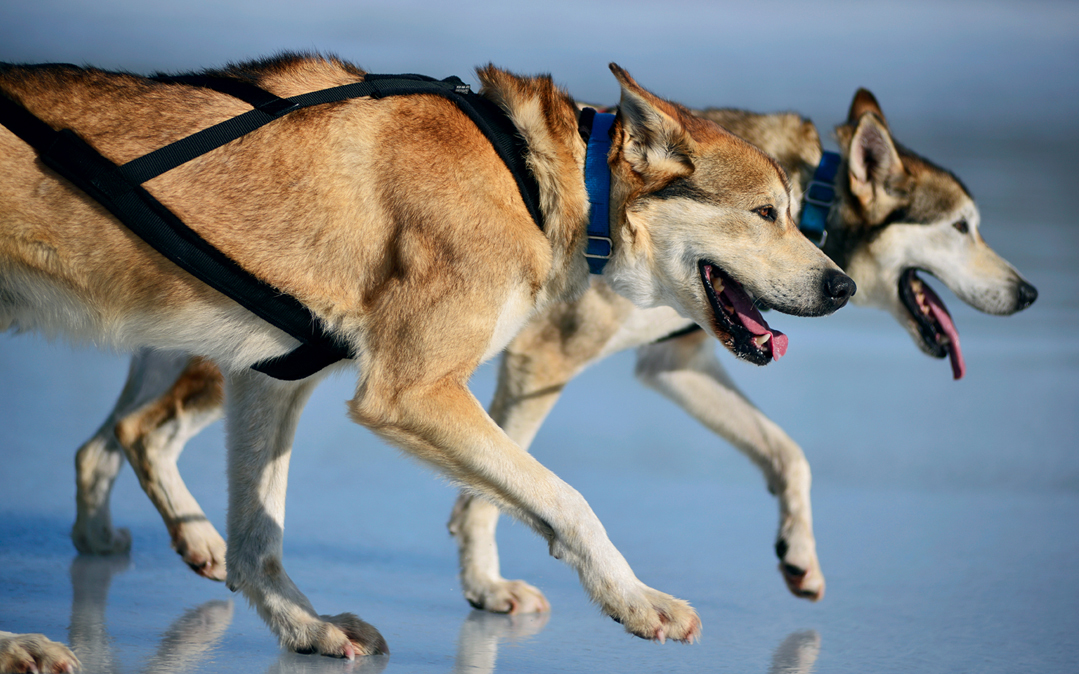
Sled dogs Tina and Tank (at left) settle into an easy five-mile-per-hour trot.
Their journey began on a drizzly morning in late September 2015, with the couple launching a canoe on the South Kawishiwi River and paddling downstream into the Boundary Waters. Friends delivered their dogs and winter gear when the lakes froze over in December. Come spring, they will transition back to canoeing. With the help of a support crew for food and equipment resupplies, they won't set foot outside of the BWCA for the entire year. "We're out here to be in the wilderness, not to travel from A to B," says 34-year-old Amy.
We pause once the dogs tire, allowing Dave to find our position on a topo map. His finger, soot-black from tending the titanium woodstove that heats the couple's nylon tepee, traces a 20-mile day trip through Knife Lake's spidery arms, across several portages to a handful of smaller lakes, and finally looping back to our campsite. On their odyssey, the Freemans are endeavoring to visit half of the thousand bodies of water in the wilderness. Today's jaunt will add three new ones to the list.
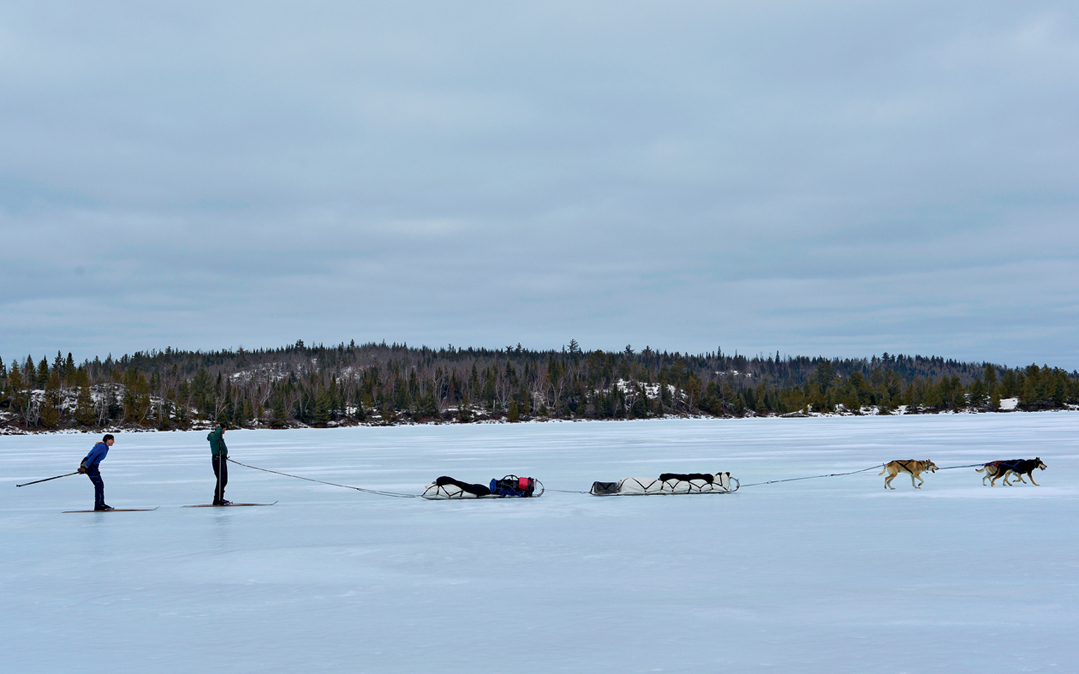
Array
We glide across a bay and steer the dogs toward shore. The headland is all rock and pine, bare in the bright sunshine. The dogs collapse in the snow. Dave, who turned 40 this year but still sports a boyish grin, picks up a razor-sharp flake of stone. "This is why it's called Knife Lake," he says. Paleo-Indians—the predecessors to today's Ojibwe—quarried siltstone here to be shaped into spear points and scrapers.
I touch the stone, feeling handwork thousands of years old. Suddenly, this nondescript place radiates energy from generations of low-impact indigenous miners. In contrast, Twin Metals plans to dig 50,000 tons of ore per day, creating mountains of blasted rock and vast tailings ponds of toxic byproducts. As I ski and camp in the Boundary Waters with the Freemans over the next few days, I will have ample time to consider the potential consequences of an industrial mine in such a water-rich landscape. But now Tank is back on his feet, quivering with excitement. "Let's go!" Dave says, and we glide deeper into the frozen backcountry.
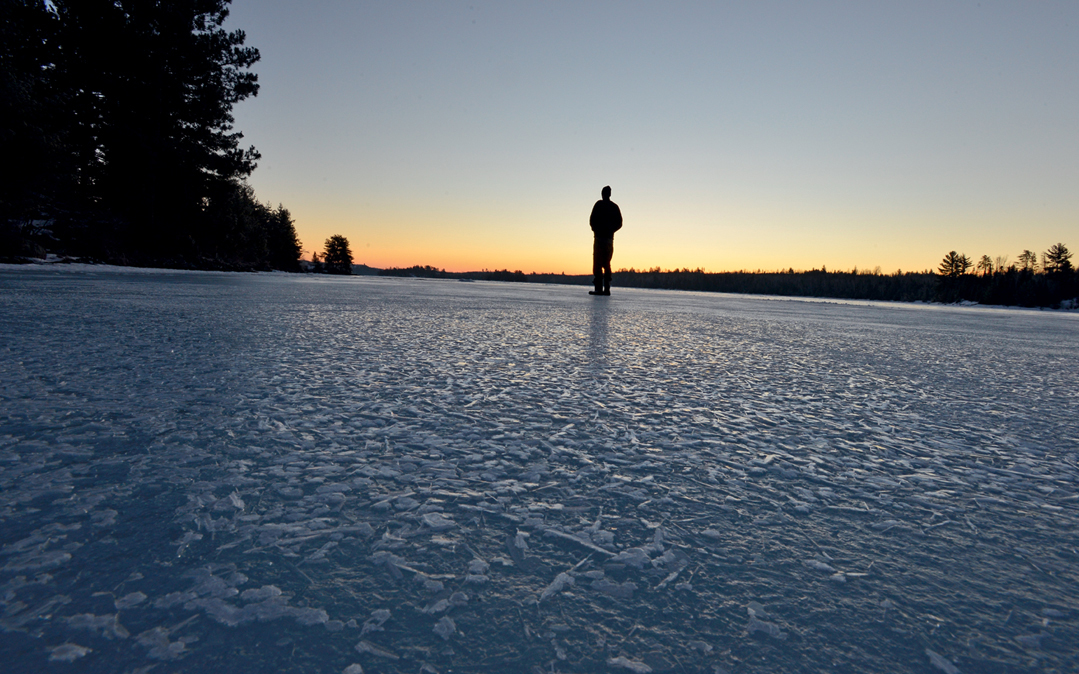
Array
Becky Rom remembers debating in favor of the Wilderness Act as an Ely high school student in the early 1960s—and being grossly outnumbered by her classmates. Her father was a miner's son who cut against Ely's resource-extraction heritage to start a canoe outfitting business in 1946. "It wasn't long before we had 500 canoes in our backyard," recalls Rom, who began guiding trips at age 14. "We were the largest canoe outfitter in the world."
Ely's economy became increasingly reliant on catering to tourists, especially when—after producing 41 million tons of iron ore—the Pioneer Mine closed in 1967 and the community lost 1,500 residents. Even so, many locals disparaged the vacationers as "packsackers." Tourism today contributes $850 million annually to northeastern Minnesota's economy, but it's still viewed by some as a second-rate industry.
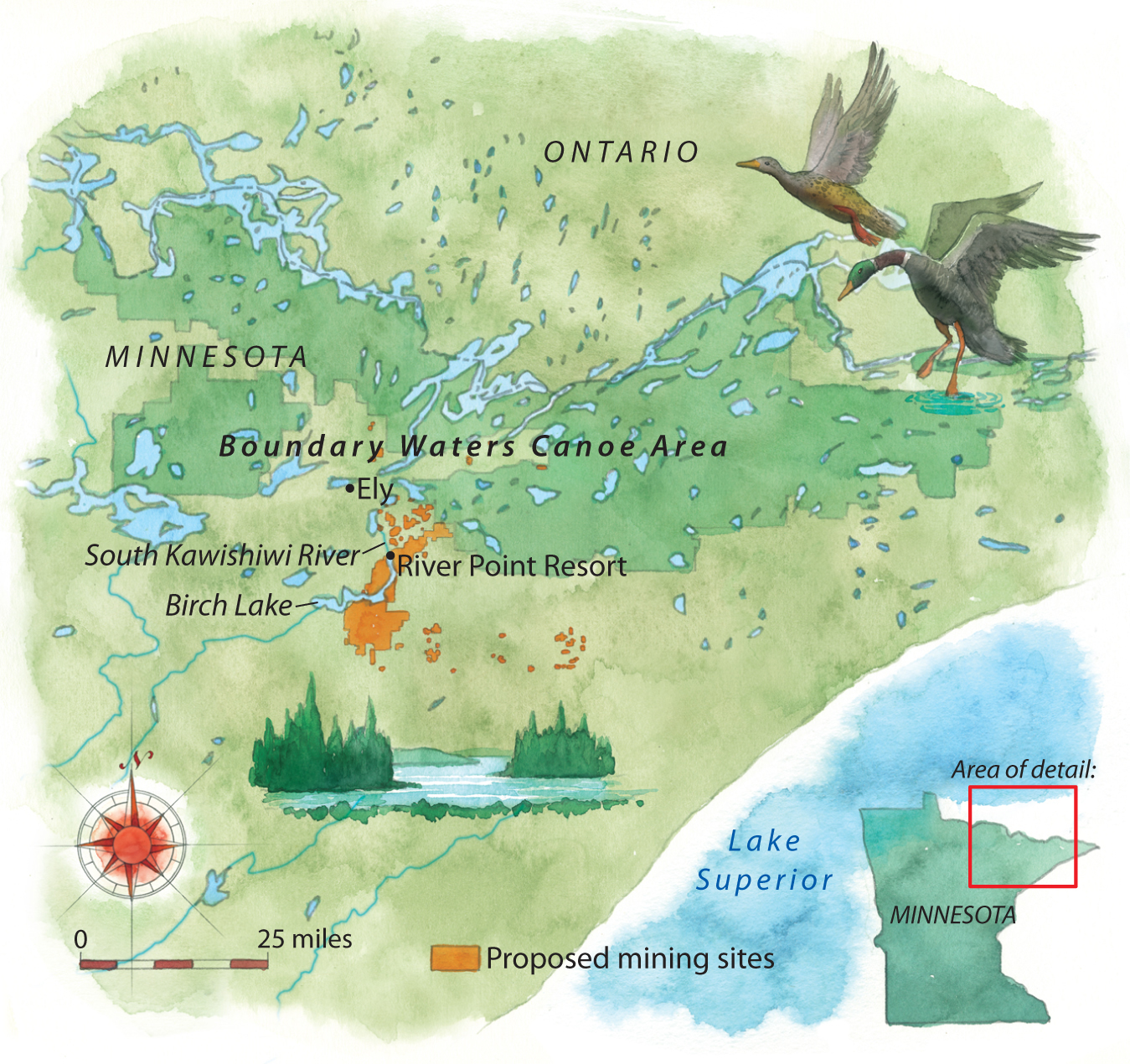
The Boundary Waters Canoe Area is in northern Minnesota just below Ontario, Canada.
In 1978, locals aggressively challenged a federal bill that ultimately cut the use of motorboats and snowmobiles within the wilderness area by 80 percent and outlawed mining on public land across the north end of the BWCA watershed. Mineral exploration and development was, however, allowed in the area's southern perimeter, near Ely. Twin Metals' claims, active since 1966, are located on this federal land. Antofagasta has won over many Ely residents with promises of a return to the town's boom days as a resource hub.
"It offers the opportunity for economic growth," says Ely mayor Chuck Novak. "The construction and operational jobs would equate to filling the empty housing in Ely as well as stabilizing the local businesses that now close over the winter months or only open for evening meals."
Unfortunately for Antofagasta, its federal mining leases expired in 2013. The company has been seeking to renew them. Rom and opponents in the Save the Boundary Waters campaign (including sporting organizations and conservation groups like the Sierra Club) are urging the Bureau of Land Management (which administers Twin Metals' mineral leases) and the U.S. Forest Service to deny any extension. Beyond that, they are asking Interior Secretary Sally Jewell to impose a 20-year moratorium on mining in the area. The ultimate goal is to protect the watershed entirely, through either an act of Congress or the creation of a national monument.
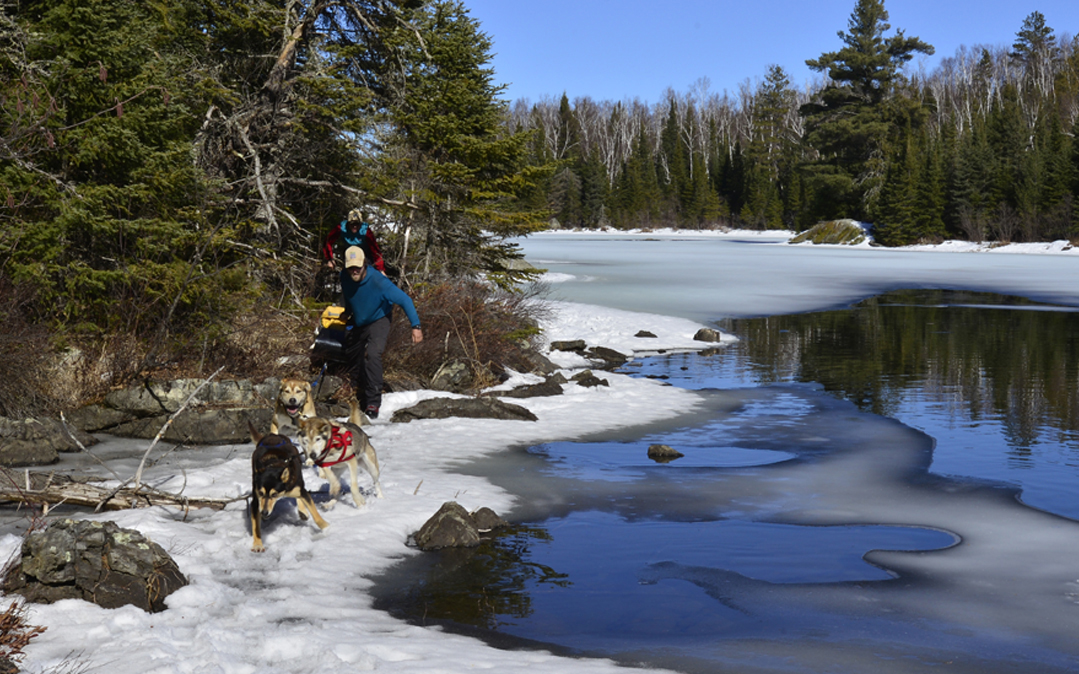
Array
The Twin Metals development would surround the Koschaks' resort on three sides. Ore would be mined on the east side of the river and transported in a massive underground tunnel to a processing facility on the west shore. River Point would be the first of 29 tourist facilities to receive any potentially contaminated runoff; from there, the water flows into the Boundary Waters, Canada's Quetico Provincial Park, and Voyageurs National Park.
"All the equity and time we've put into this would be ruined," Koschak says, shaking his head. "The value of our property has diminished just because of the possibility of a mine. How can you sell peace and serenity with an industrial mine right next to you?"
It's evening on Knife Lake; the woodstove is crackling and the tent cozy. Dave is relating his first Boundary Waters experience: a canoe trip at age 12. "I felt like I was in the middle of nowhere," he says. "When we got back to the outfitters, I saw the maps on the wall with all the lakes—I just wanted to go to all of them. So I bought a map and took it home and put it on my wall and spent a lot of time thinking about where I wanted to go next."
Amy took her first canoe camping trip at the same age. She remembers strenuous portages, hellish mosquitoes—and a moment of bliss, supine on a glacier-polished rock: "All I could hear was the water splashing on the shore and loons calling," she says. "It was the best thing ever." Tears filled her eyes when her family packed the car to drive home to the Twin Cities.
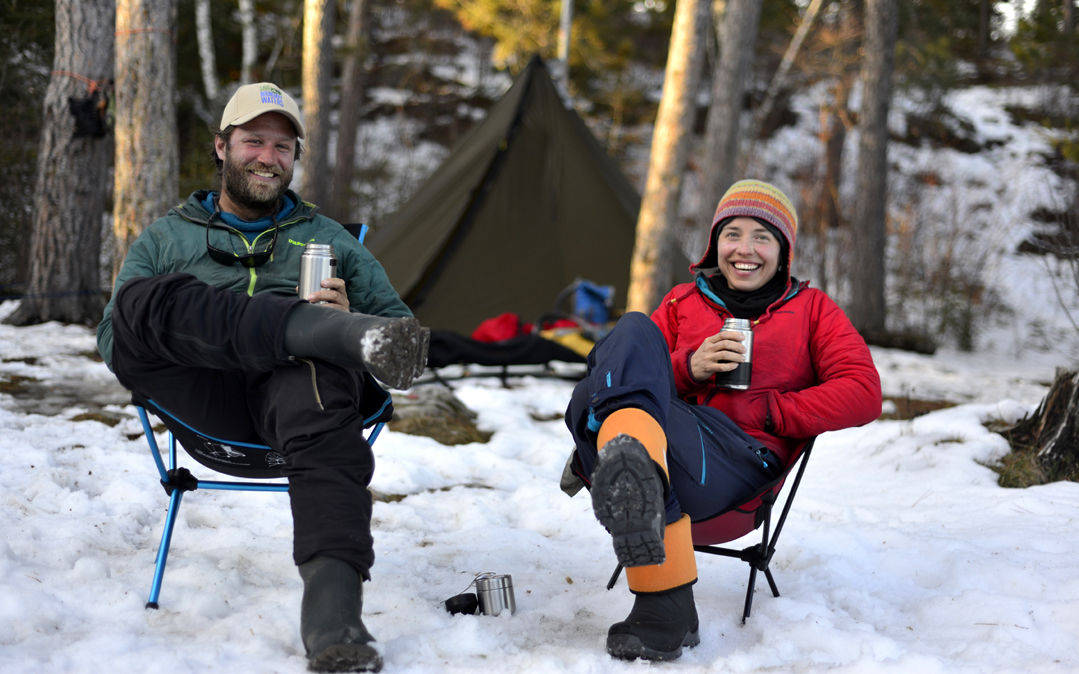
On their yearlong Boundary Waters odyssey, Amy and Dave Freeman maintained a nomadic lifestyle, moving to a new campsite several times per week.
The couple became part of the campaign against nickel-and-copper mining in the winter of 2012, drawing attention to it via a dogsled expedition from northern Minnesota to the state capital of St. Paul. Later, when local activists came up with the idea of collecting signatures on a canoe, Dave and Amy volunteered to paddle the petition to Washington, D.C. One hundred and two days after departing Ely, on December 2, 2014, they delivered the canoe to the headquarters of the U.S. Forest Service.
A place that's half land and half water is the absolute worst location for a new mine, critics insist. Antofagasta is targeting deposits of copper and nickel buried in sulfur-bearing bedrock. Such mines are essentially waste-management industries. The Twin Metals deposit, for example, contains barely 0.5 percent copper. The rest of the worthless ore would be stored in rock piles mounding across an area the size of 100 football fields. Finer, chemically processed materials would be quarantined in tailings ponds.
Problems arise when the sulfur in waste materials reacts with air and water to produce sulfuric acid, a process known as acid mine drainage. Heavy metals like arsenic, cadmium, and mercury are more likely to leach out of rock in acidic conditions. Acid mine drainage is almost impossible to prevent and can happen at any time—even long after a mine has been closed. Tailings ponds are prone to devastating leaks and have a history of contaminating waterways, as they have at Montana's Berkeley Pit and the Iron Mountain Mine near Redding, California—both now Superfund sites. The EPA calls the mining of sulfide ore America's most toxic industry. In 2010, such mines accounted for 41 percent of all toxins released into the environment. "It is not a question of whether, but when, a leak will occur that will have major impacts on the water quality of the Boundary Waters Canoe Area," says Tom Myers, a hydrogeologist and water resources consultant.
The most enduring memory from the Freemans' paddle to D.C., Dave says, was the number of supporters they met en route. "Everywhere we stopped, people had a connection to the Boundary Waters," even in places as far removed from Minnesota's Northwoods as Ottawa, Vermont, and New York. It convinced the Freemans that it was the right time to take an unpaid sabbatical in the wilderness.
Each evening, long after I've succumbed to my sleeping bag, Dave and Amy hunch over a glowing iPad to blog. By moonlight, Dave climbs a hill and stretches his phone overhead to receive a signal. Thousands of people will share the highlights of our day's travel—postholing across steep, snowy portages, finding otter and wolf tracks, and skiing through the meltwater that pools on the frozen lakes on a balmy late-winter day. These followers, insists Dave, have a right to take part in the management of these public lands.
Some moments, however, cannot be conveyed through blogs or Instagram. On our last day on the trail, we pack up the tent and hitch the dogs to plastic toboggans. Travel on the frozen lakes is effortless, but the portages are a different matter—thigh-deep rotting snow and steep inclines force us to work alongside the huskies, skidding the sleds overland and laboring onward to Moose Lake, at the wilderness's edge, where I'll spend my final night with the Freemans. Under a relentless sun, the toboggans twist, flex, and scrape over jagged rocks, the dogs pulling tirelessly. Finally, after threading an ice bridge between open water on a pond, we arrive on the broad expanse of the lake, overheated, exhausted, and thirsty.
Cylindrical holes drilled by ice fishermen are the day's greatest gift. We anchor the dogs and pour handfuls of slush over our heads, marveling at how fast the ice melts on our sweaty scalps. We lie on our bellies, savoring the cold and gulping straight from the lake. The dogs look on, bewildered by our strange joy.
What You Can Do
Protect the Boundary Waters Canoe Area: Urge Interior Secretary Sally Jewell to withdraw all minerals in the BWCA watershed from the federal mining program. Send a message today!
 The Magazine of The Sierra Club
The Magazine of The Sierra Club
